Bruce Gary, Last updated: 2018.10.18 17 UT
| Observing break |
I
have changed my
interpretation
of OOT during
the past 6
months. Instead
of fade rates
that differ at
g'-, r- and
i-bands I now
favor a constant
OOT at all bands
with a 4-month
fade feature
with different
depths at each
band. The late
September
feature that I
called a
"brightening"
would then be
re-interpreted
as a return to
normal OOT
(i.e., the same
OOT level as
existed in 2018
May). This is
illustrated in
Fig. 1a.
_____________________________________________________________________________________________________________________________________
Links on this web page
g', r' & i' Magnitude vs. date
V-mag and g'-mag vs. date
AAVSO light curve
List of observing sessions
My collaboration policy
References
Links on another web page
Comparison with AAVSO observations
Finder image showing new set of reference stars
HAO precision explained (580 ppm)
DASCH comment
Go back to 6th of six web pages (for dates 2018.02.25 to 2018.08.01)
Go back to 5th of six web pages (for dates 2017.11.13 to 2018.01.03)
Go back to 4th of six web pages (for dates 2017.09.21 to 2017.11.13)
Go back to 3rd of six web pages (for dates 2017.08.29 to 2017.09.18)
Go back to 2nd of six web pages (for dates 2017.06.18 to 2017.08.28)
Go back to 1st of six web pages (for dates 2014.05.02 to 2017.06.17)
Reference Star Quality Assessment (the 10 best stars out of 25 evaluated)
This is the 7th web pages devoted to my observations of Tabby's Star. When a web page has so many images that download times are long, a "split" is made and this is the latest one.
g', r' and i' Mag's vs. Date
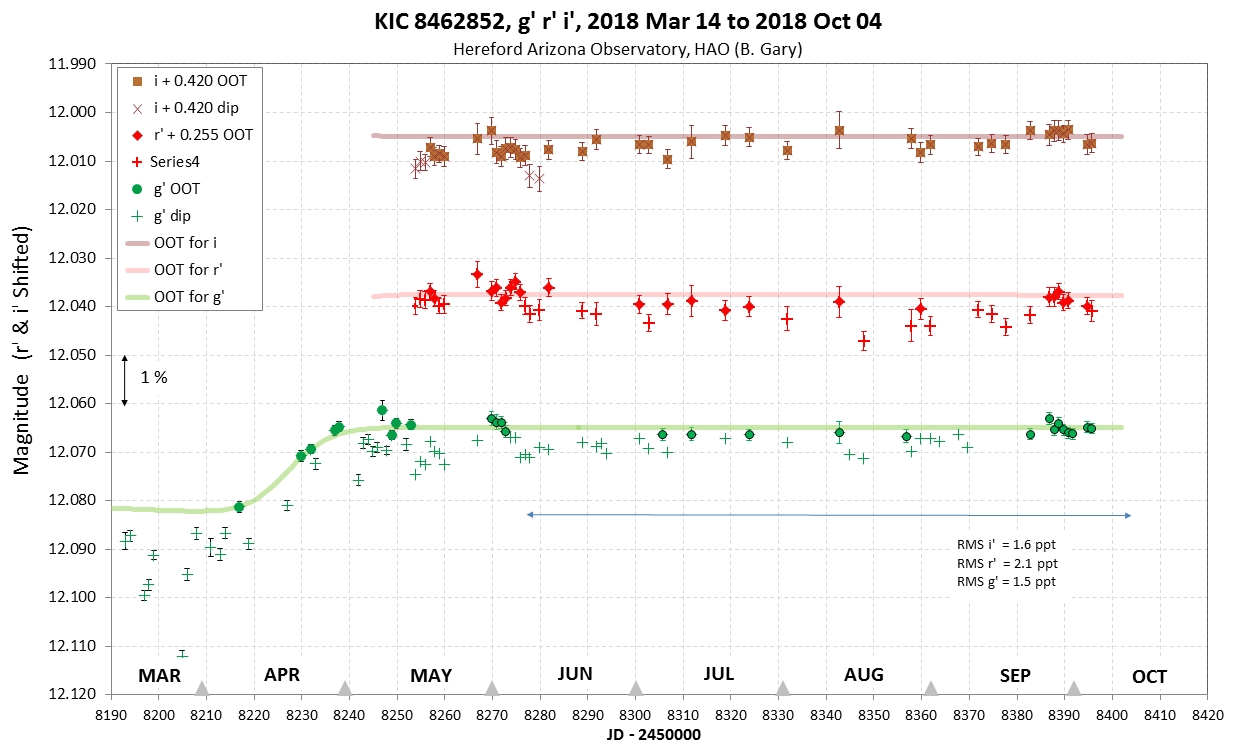
Figure 1a. HAO g', r' and i'-magnitudes for the past 7 months. The "OOT only" trace since 2018 May is chosen to be "flat" in order to illustrate one interpretation, namely, that since May there has been a shallow (~ 0.5 %) fade at g'-band lasting ~ 4 months, which ended in late September. The fade amount was greater at r'-band than g'-band, and there was no fade at i'-band. If true, this would be puzzling.
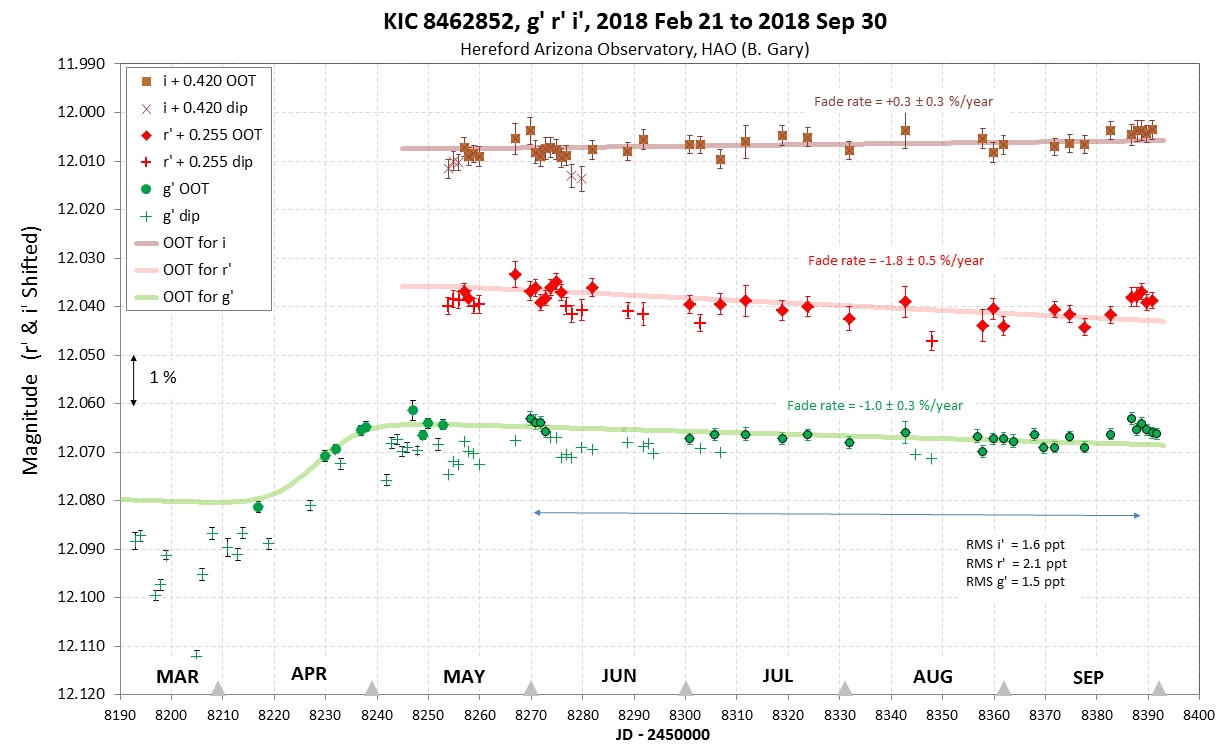
Figure 1b. This is an alternate interpretation. It involves different fade rates for each band starting in 2018 May, with a recovery in late September.
V and g'-Mag vs. Date
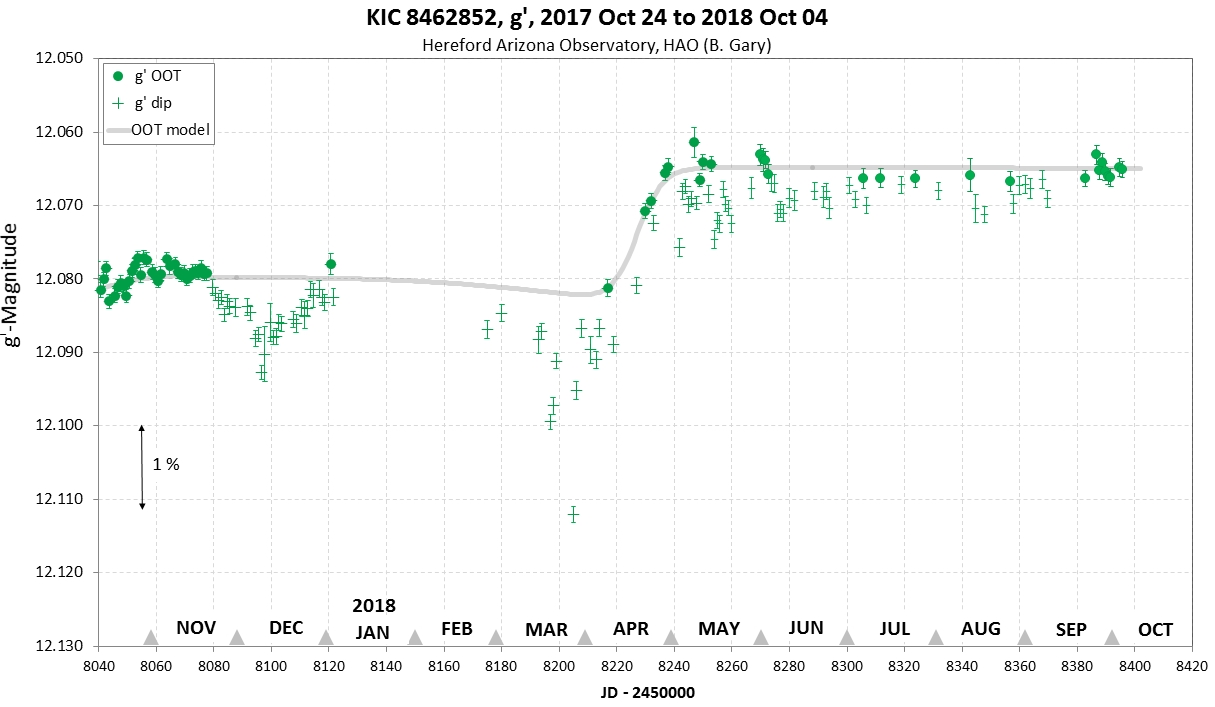
Figure 2a. HAO magnitudes at g'-band for the past year. The "OOT only" trace is the second "U-Shaped" component needed to account for the upper-boundary of measurements (presumably the out-of-transit, or OOT, level). The OOT level since 2018 May was chosen to be constant.
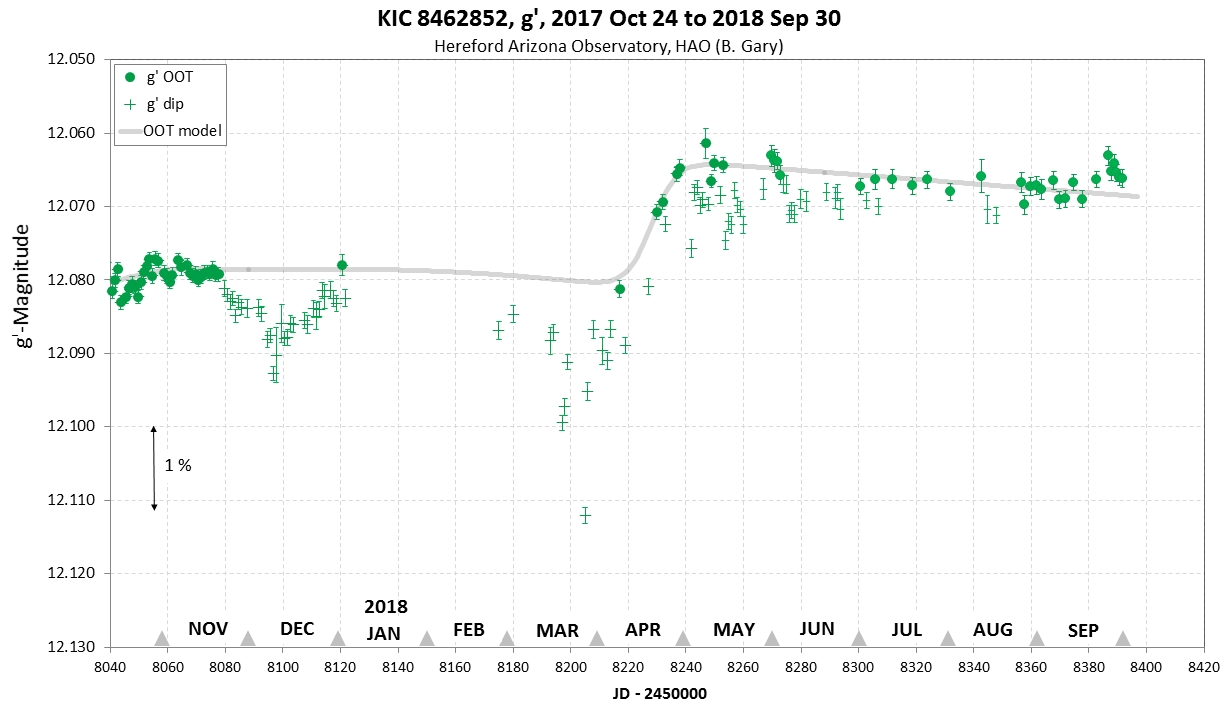
Figure 2b. Alternative OOT interpretation.
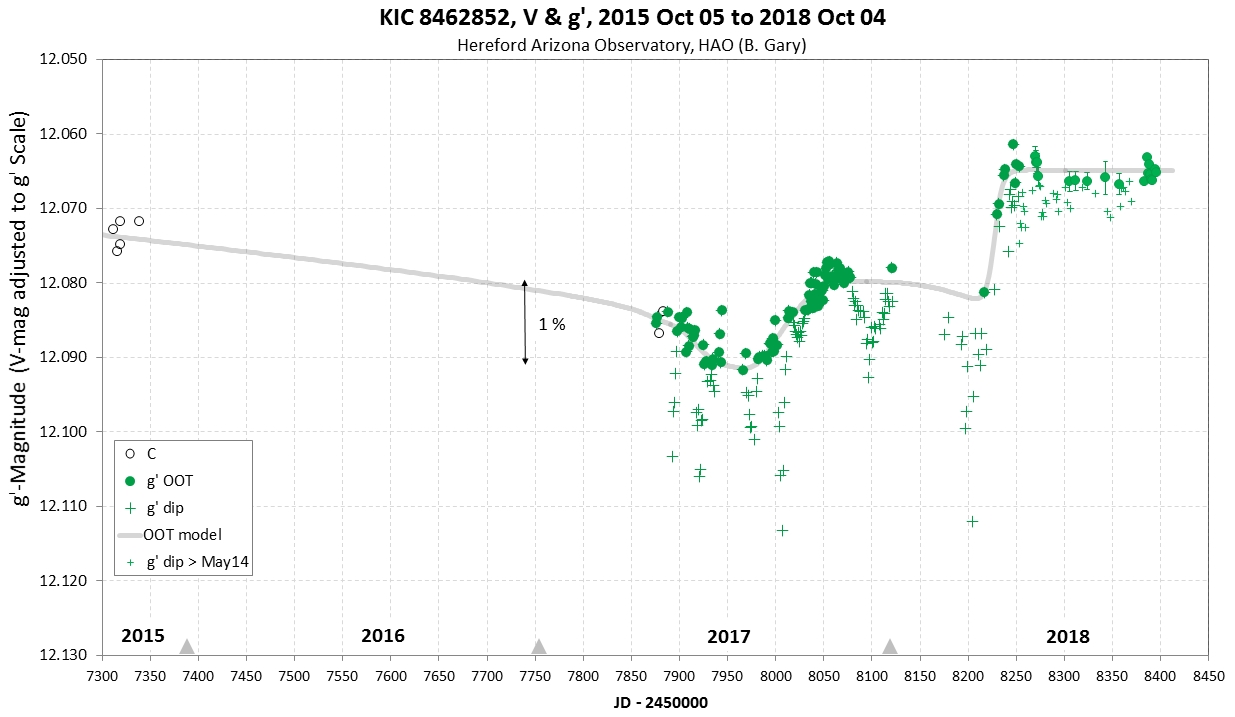
3a. This shows the last 2.5 years of C-, V- and g'-band HAO measurements (C- and V-mag's adjusted to match g'-mag's).
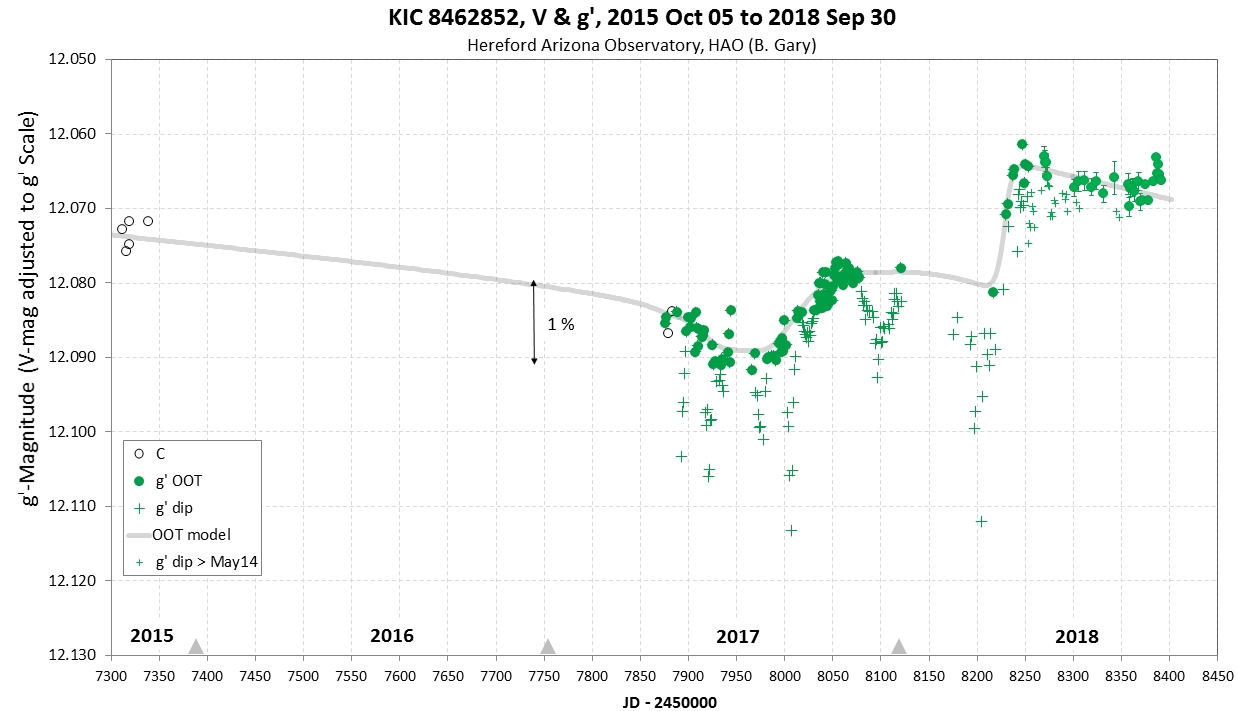 Figure 3b. This
shows the last 2.5 years of C-, V- and g'-band HAO
measurements (C- and V-mag's adjusted to match g'-mag's).
Figure 3b. This
shows the last 2.5 years of C-, V- and g'-band HAO
measurements (C- and V-mag's adjusted to match g'-mag's).
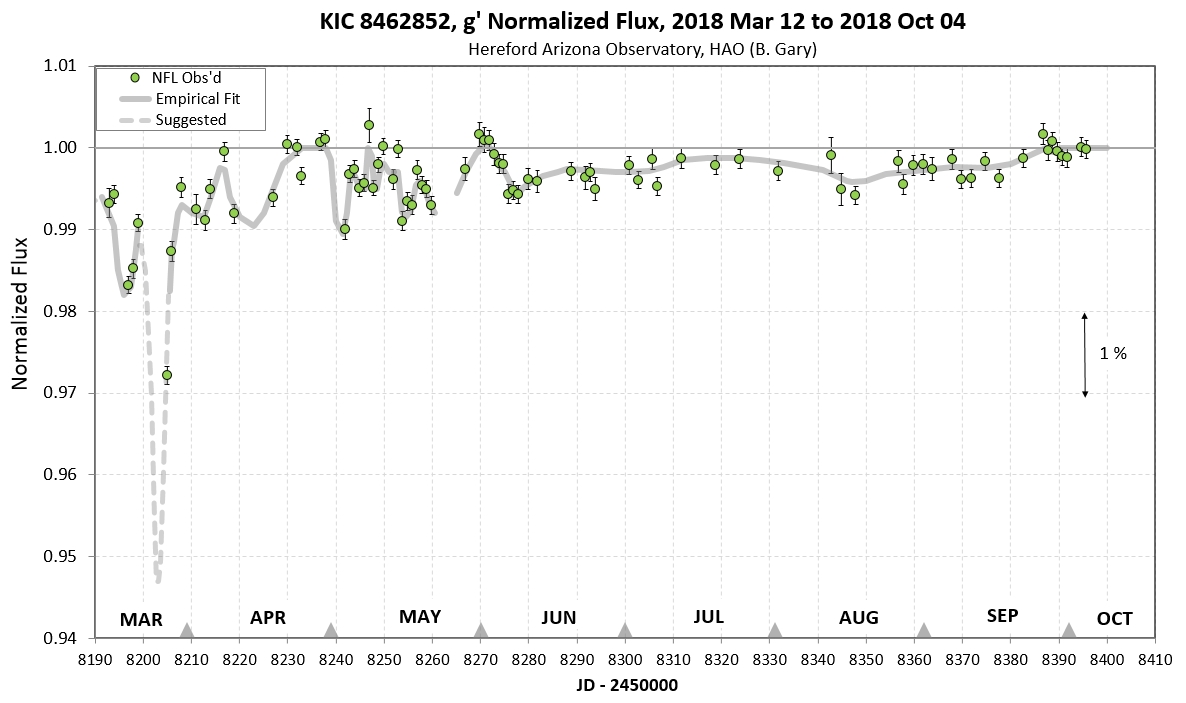
Figure 4. Normalized flux light curve for the past 1/2 year, based on the g'-band measurements and the associated OOT model that does NOT include a fade since 2018 May.
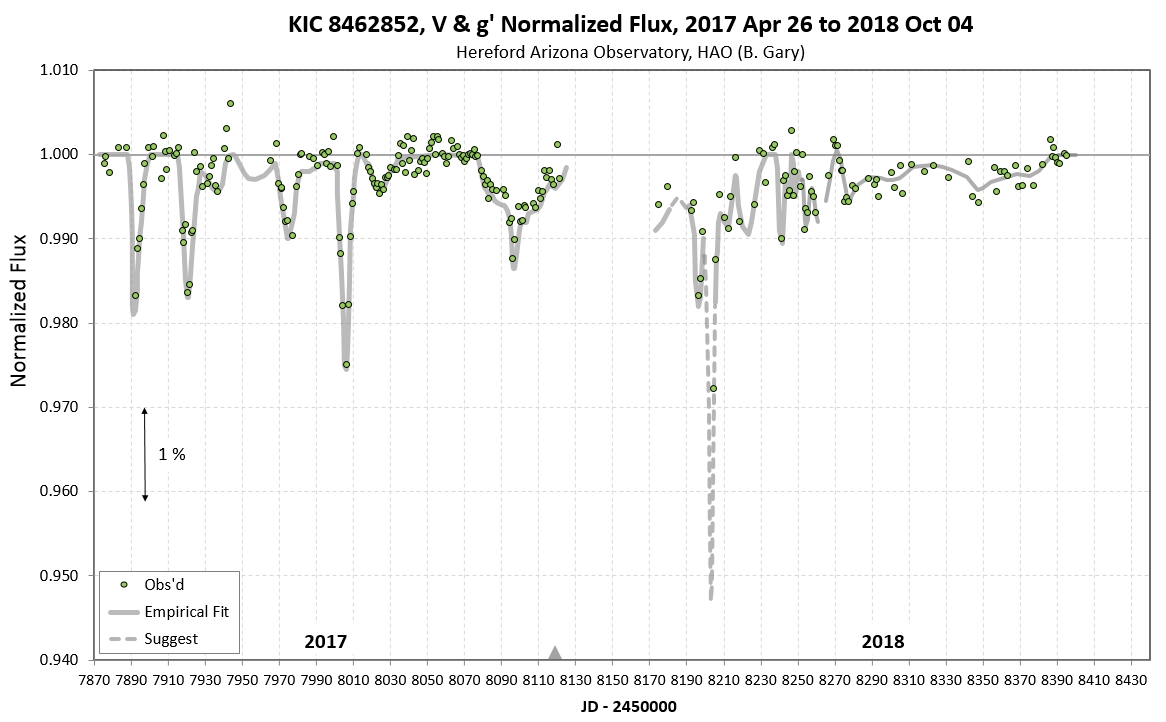
Figure 5. A 1.4-year plot of "normalized flux" based on the previously displayed g'-band measurements and associated OOT model (with two U-shaped features). The HAO data for April are too sparse for showing dip structure well; the graphs in the next section do a better job of that sine they include AAVSO measurements. (The OOT model does NOT include a fade since 2018 May.)
AAVSO Light Curve
Rafik Bourne has kindly provided the following light curve based on (mostly) AAVSO data. They provide day-timescale temporal resolution.
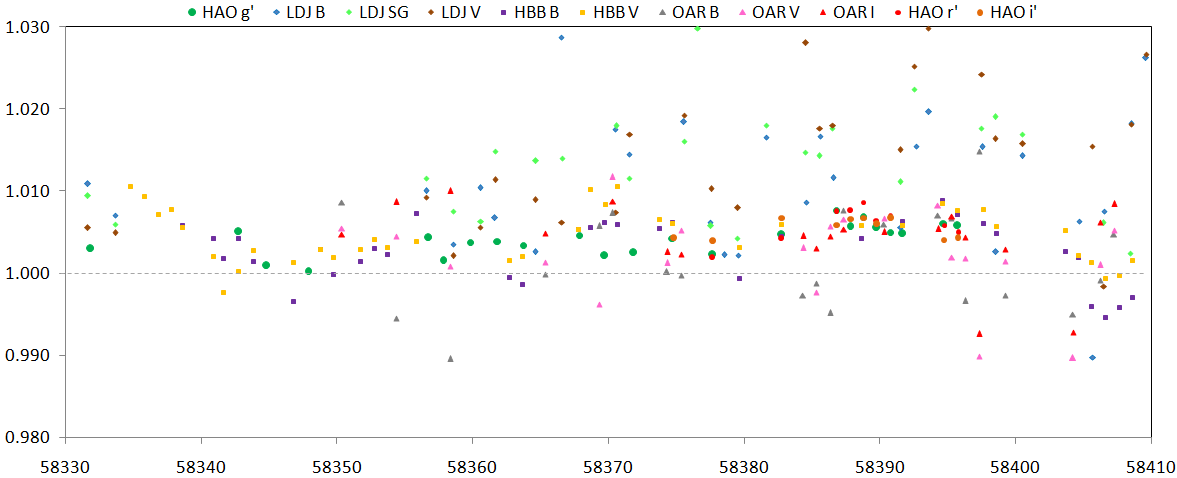
Figure 6. AAVSO daily data (plus occasional HAO data, with arbitrary offsets for each observer and band) for the last 2.6 months. Posting date: 2018.10.06 02 UT
_____________________________________________________________________________________________________________________________________
Links on this web page
g', r' & i' Magnitude vs. date
V-mag and g'-mag vs. date
AAVSO light curve
List of observing sessions
My collaboration policy
References
Links on another web page
Comparison with AAVSO observations
Finder image showing new set of reference stars
HAO precision explained (580 ppm)
DASCH comment
Go back to 6th of six web pages (for dates 2018.02.25 to 2018.08.01)
Go back to 5th of six web pages (for dates 2017.11.13 to 2018.01.03)
Go back to 4th of six web pages (for dates 2017.09.21 to 2017.11.13)
Go back to 3rd of six web pages (for dates 2017.08.29 to 2017.09.18)
Go back to 2nd of six web pages (for dates 2017.06.18 to 2017.08.28)
Go back to 1st of six web pages (for dates 2014.05.02 to 2017.06.17)
Reference Star Quality Assessment (the 10 best stars out of 25 evaluated)
This is the 7th web pages devoted to my observations of Tabby's Star. When a web page has so many images that download times are long, a "split" is made and this is the latest one.
g', r' and i' Mag's vs. Date

Figure 1a. HAO g', r' and i'-magnitudes for the past 7 months. The "OOT only" trace since 2018 May is chosen to be "flat" in order to illustrate one interpretation, namely, that since May there has been a shallow (~ 0.5 %) fade at g'-band lasting ~ 4 months, which ended in late September. The fade amount was greater at r'-band than g'-band, and there was no fade at i'-band. If true, this would be puzzling.

Figure 1b. This is an alternate interpretation. It involves different fade rates for each band starting in 2018 May, with a recovery in late September.
V and g'-Mag vs. Date

Figure 2a. HAO magnitudes at g'-band for the past year. The "OOT only" trace is the second "U-Shaped" component needed to account for the upper-boundary of measurements (presumably the out-of-transit, or OOT, level). The OOT level since 2018 May was chosen to be constant.

Figure 2b. Alternative OOT interpretation.

3a. This shows the last 2.5 years of C-, V- and g'-band HAO measurements (C- and V-mag's adjusted to match g'-mag's).
 Figure 3b. This
shows the last 2.5 years of C-, V- and g'-band HAO
measurements (C- and V-mag's adjusted to match g'-mag's).
Figure 3b. This
shows the last 2.5 years of C-, V- and g'-band HAO
measurements (C- and V-mag's adjusted to match g'-mag's). 
Figure 4. Normalized flux light curve for the past 1/2 year, based on the g'-band measurements and the associated OOT model that does NOT include a fade since 2018 May.

Figure 5. A 1.4-year plot of "normalized flux" based on the previously displayed g'-band measurements and associated OOT model (with two U-shaped features). The HAO data for April are too sparse for showing dip structure well; the graphs in the next section do a better job of that sine they include AAVSO measurements. (The OOT model does NOT include a fade since 2018 May.)
AAVSO Light Curve
Rafik Bourne has kindly provided the following light curve based on (mostly) AAVSO data. They provide day-timescale temporal resolution.

Figure 6. AAVSO daily data (plus occasional HAO data, with arbitrary offsets for each observer and band) for the last 2.6 months. Posting date: 2018.10.06 02 UT
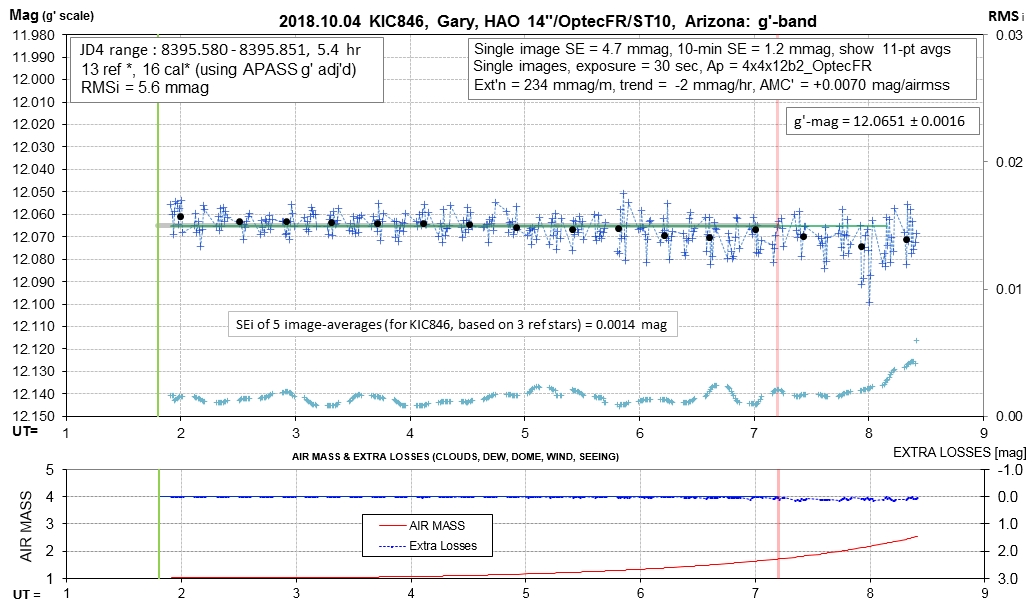
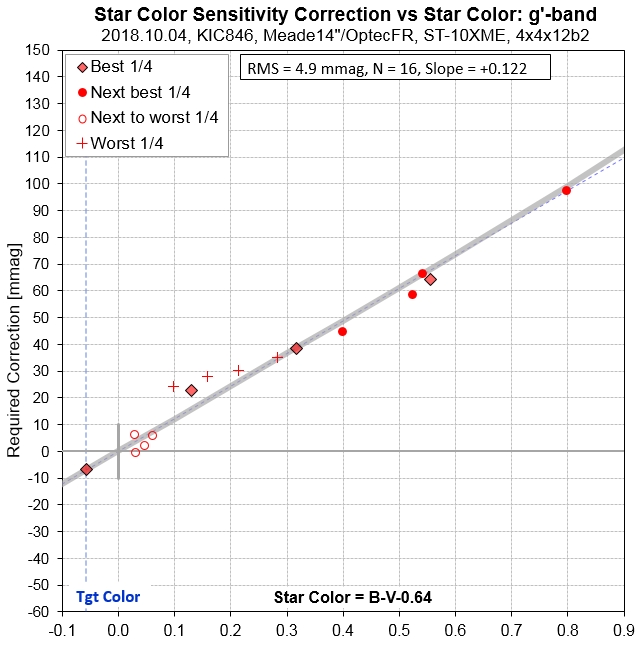
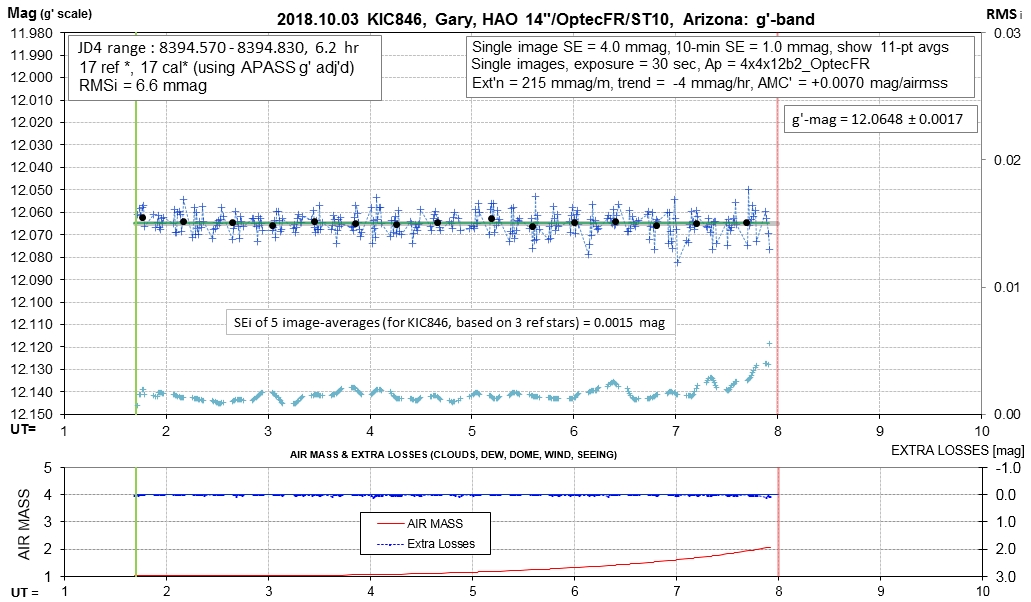
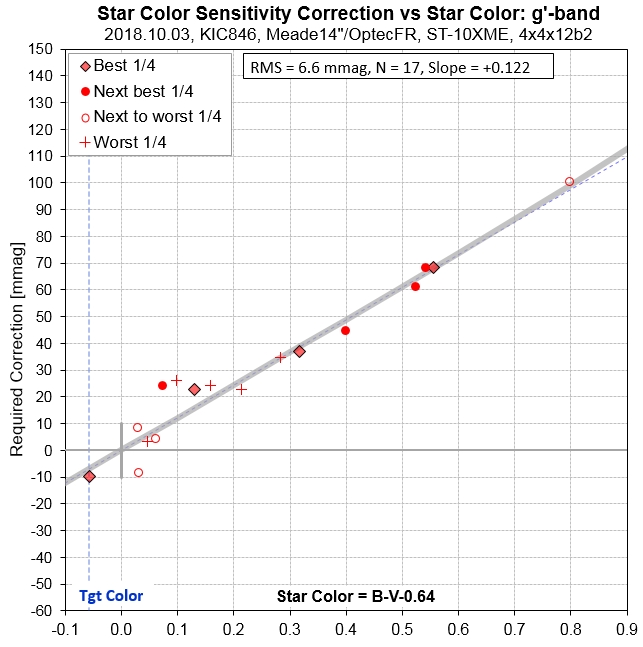
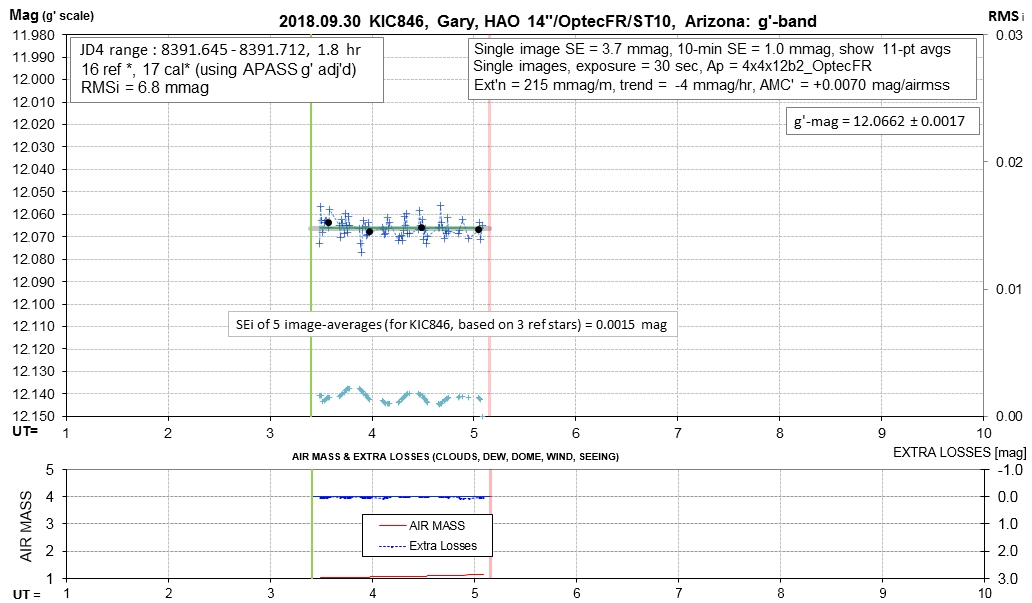
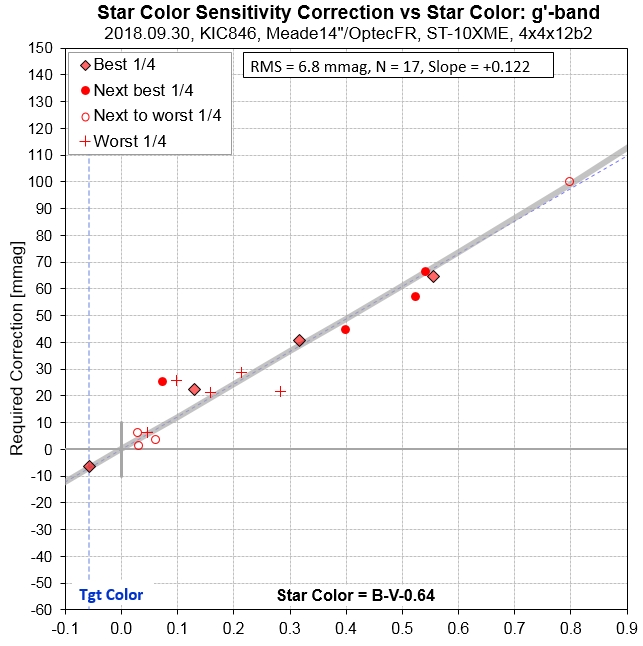
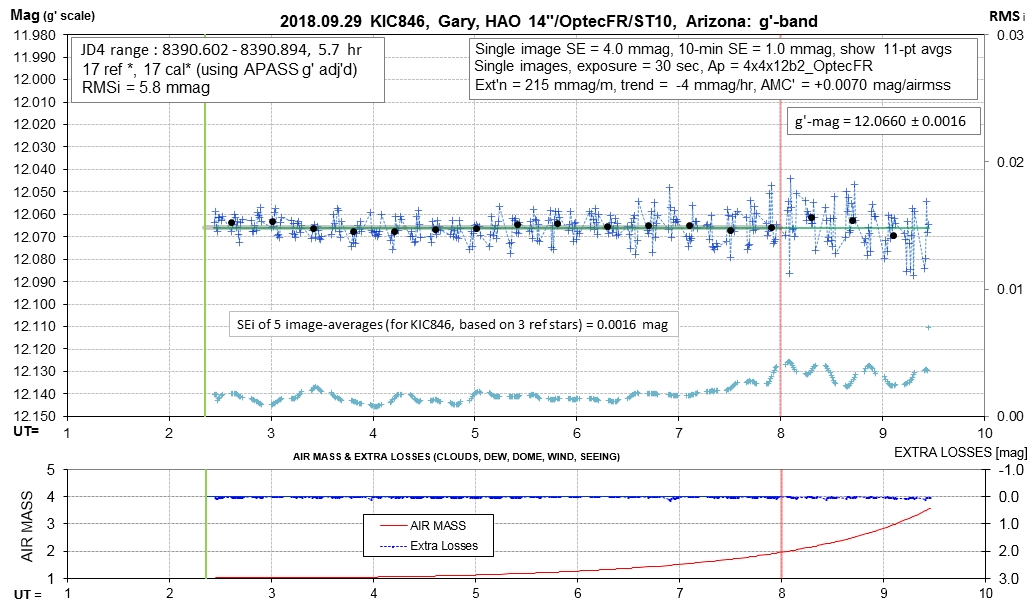
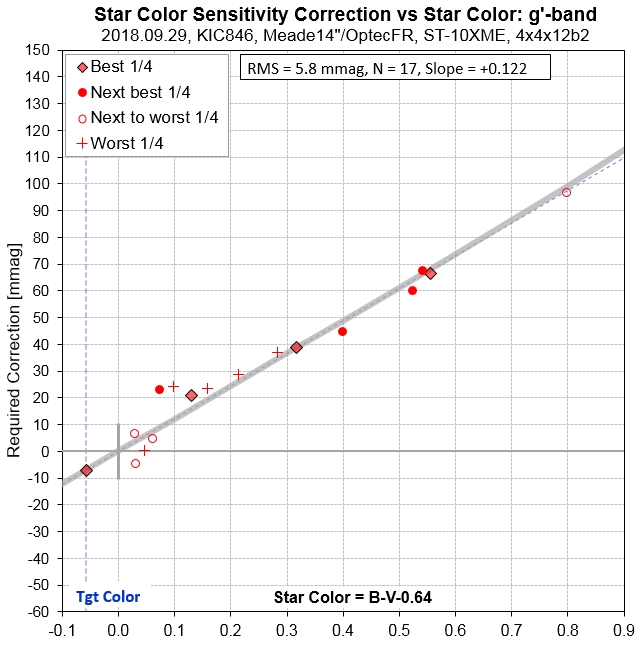
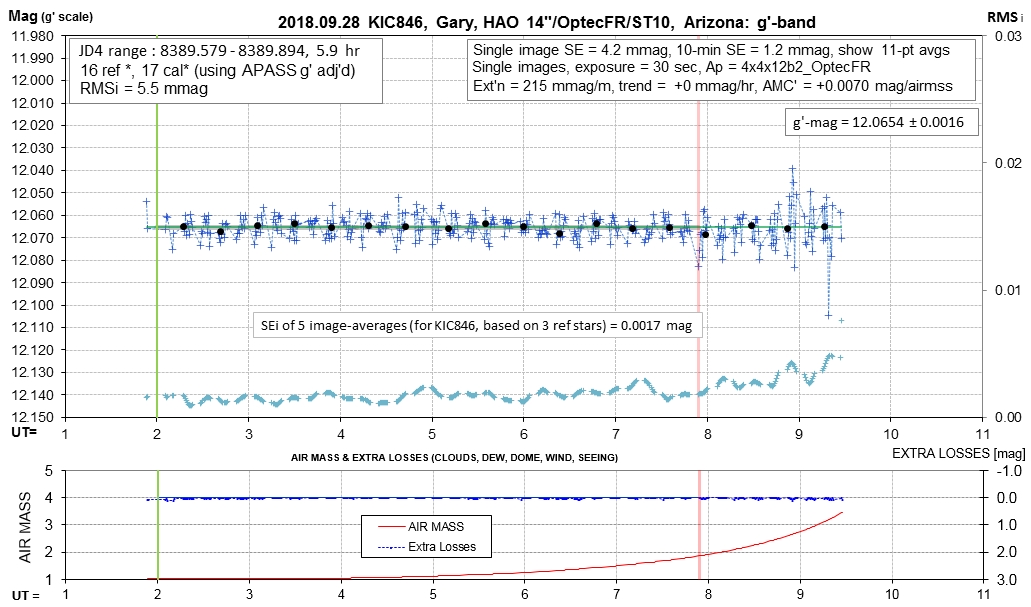
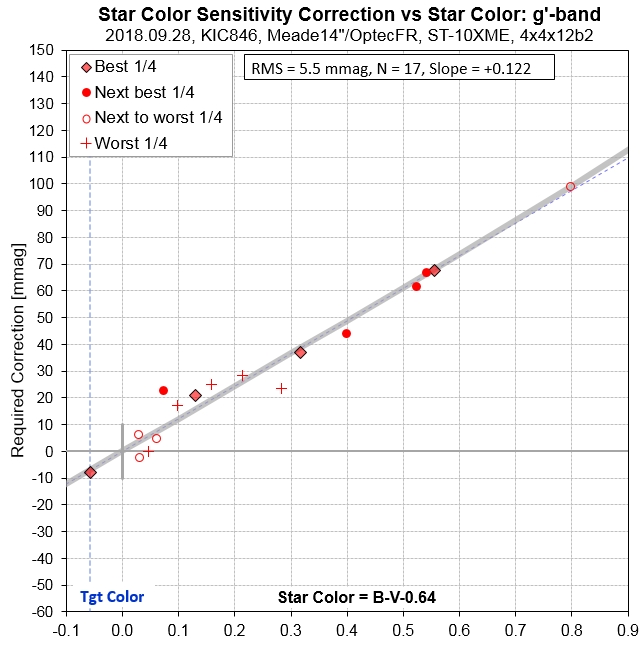
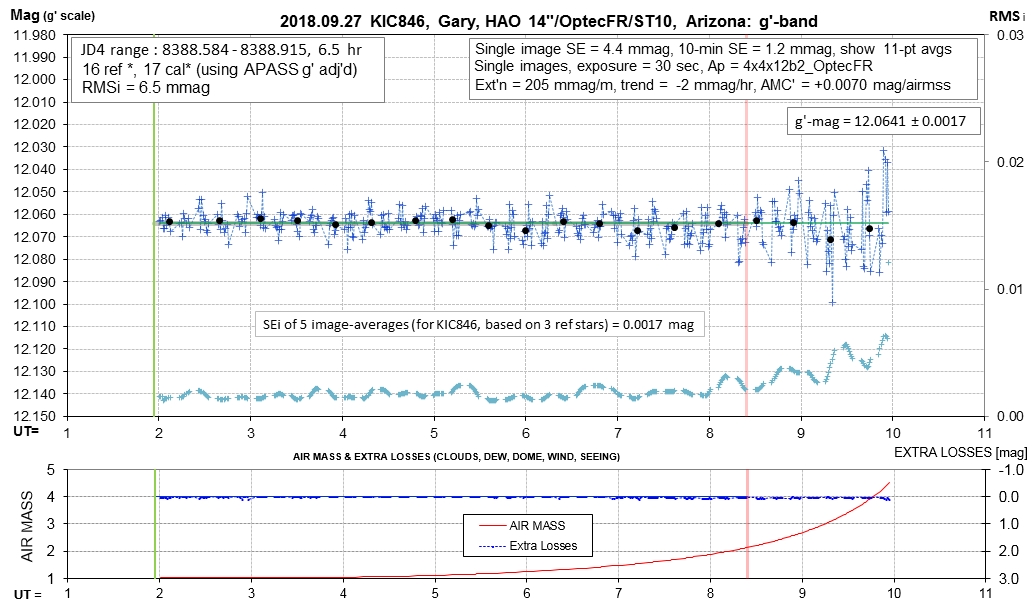
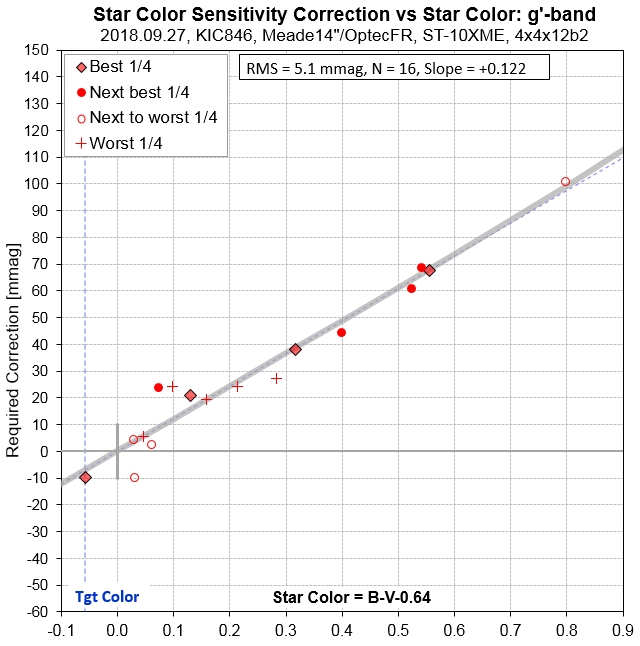
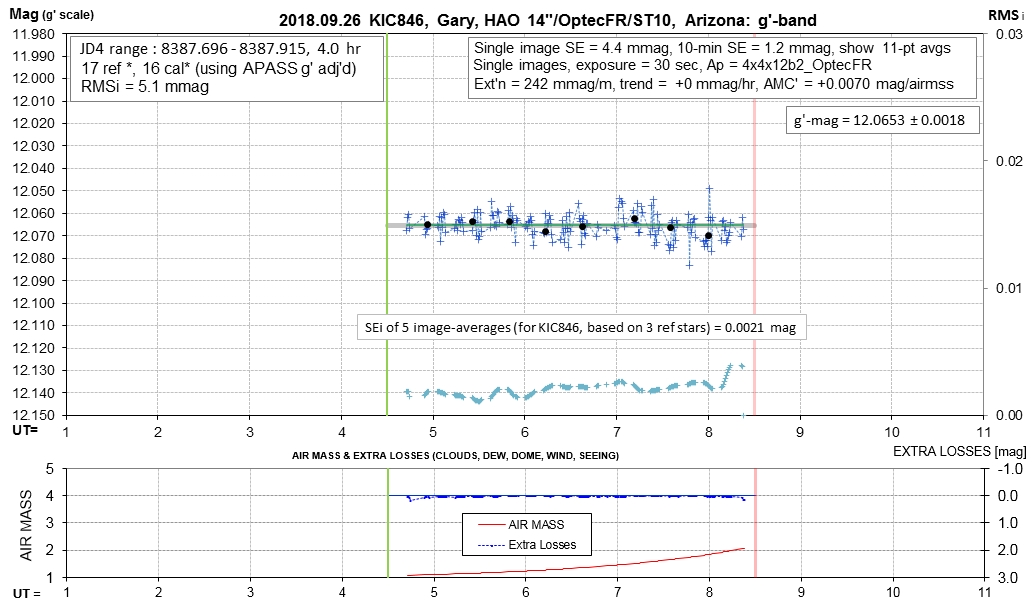
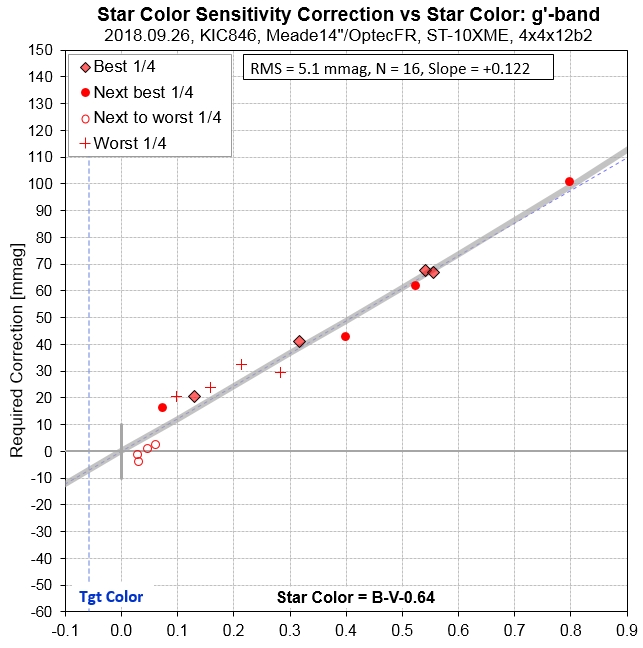
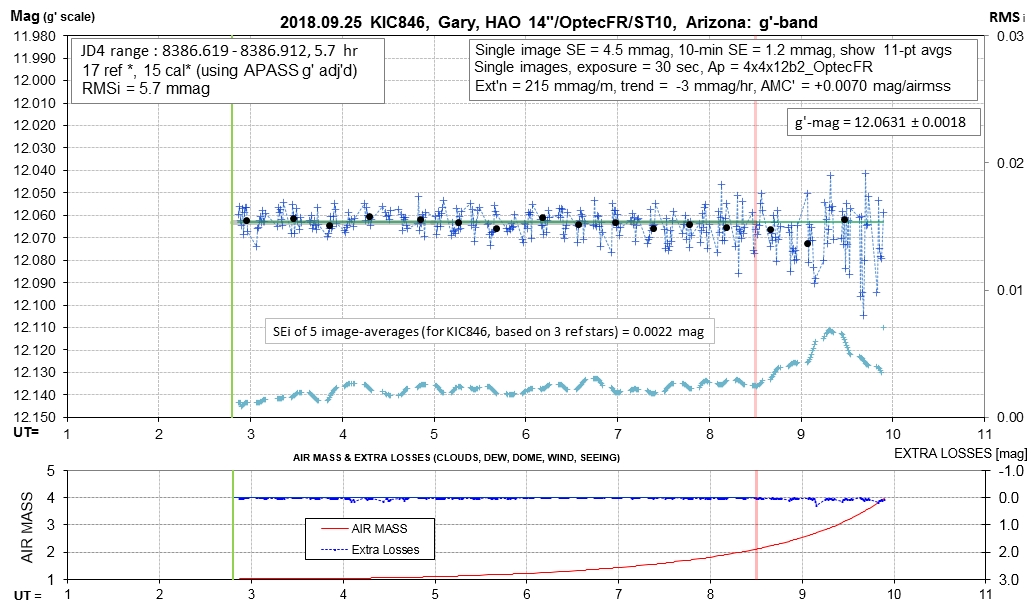
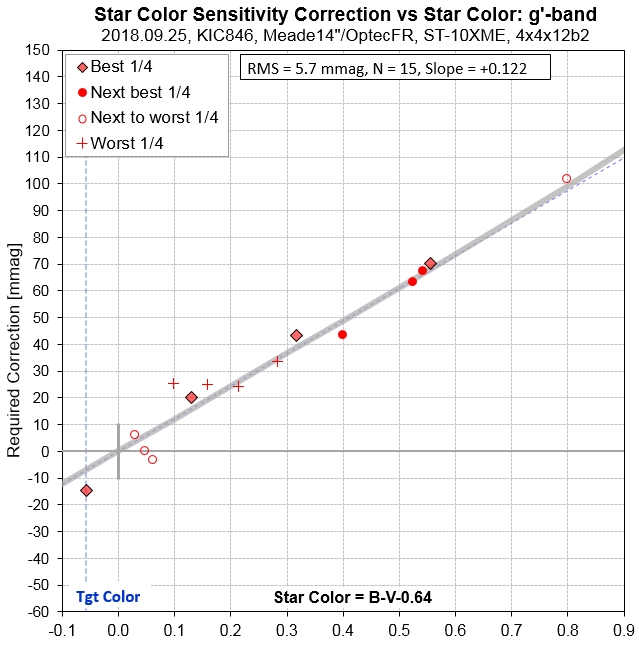
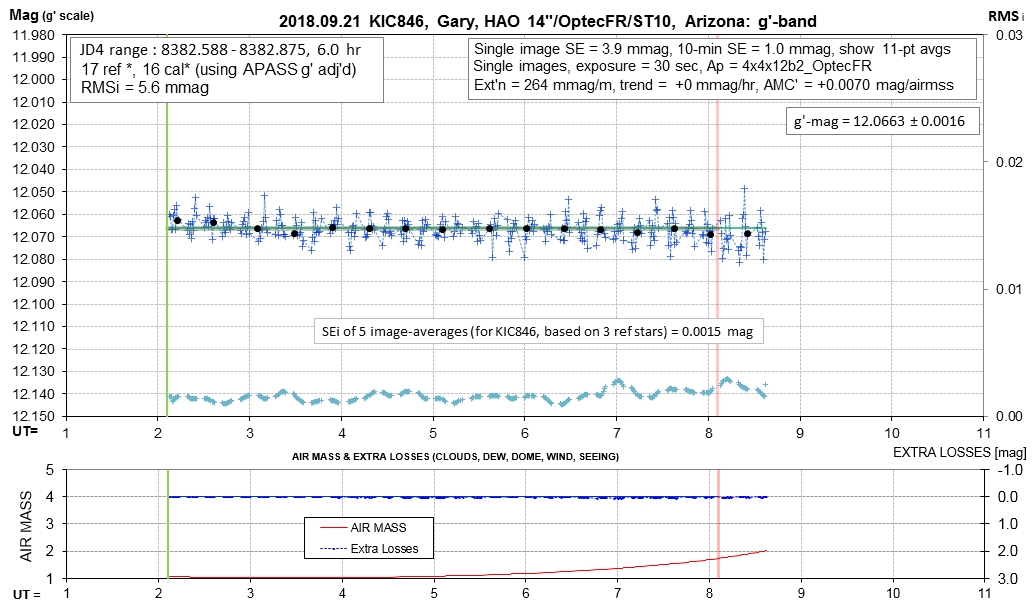
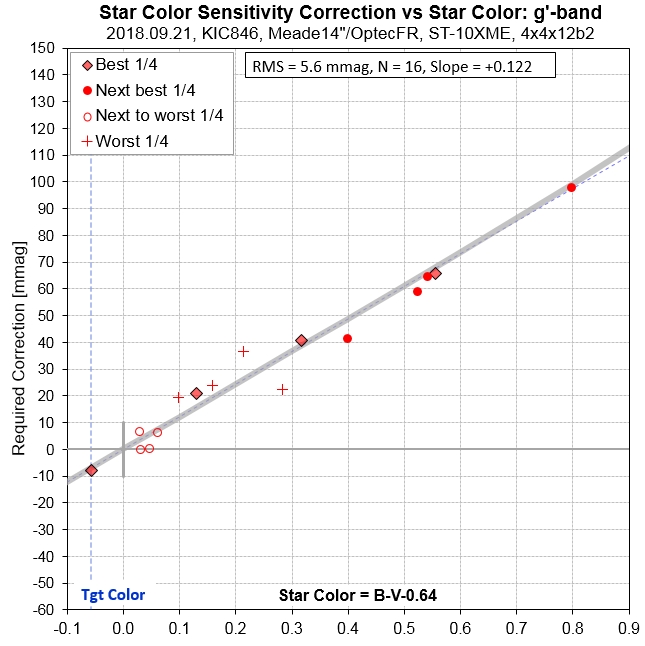
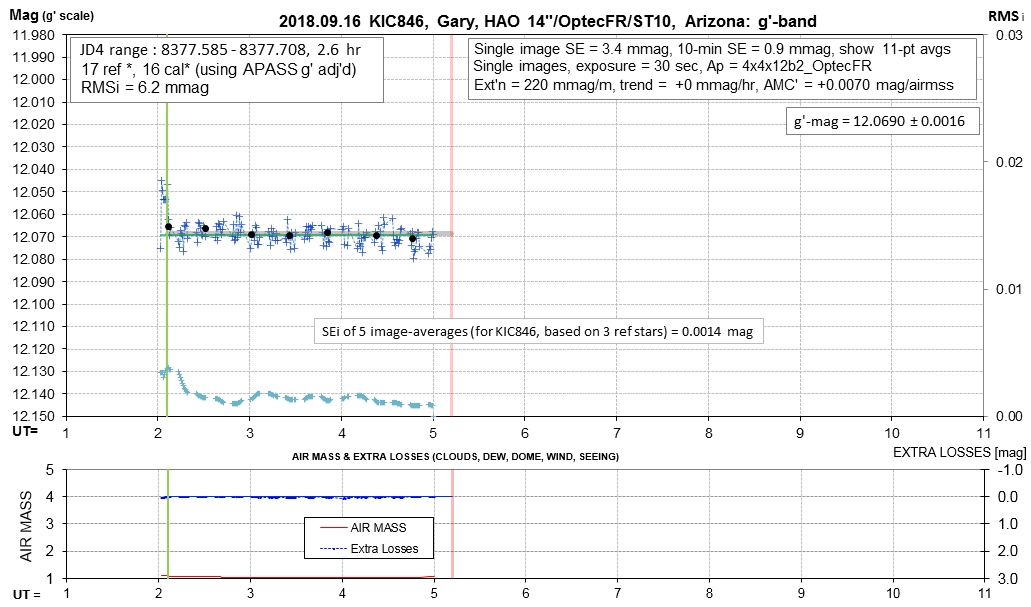
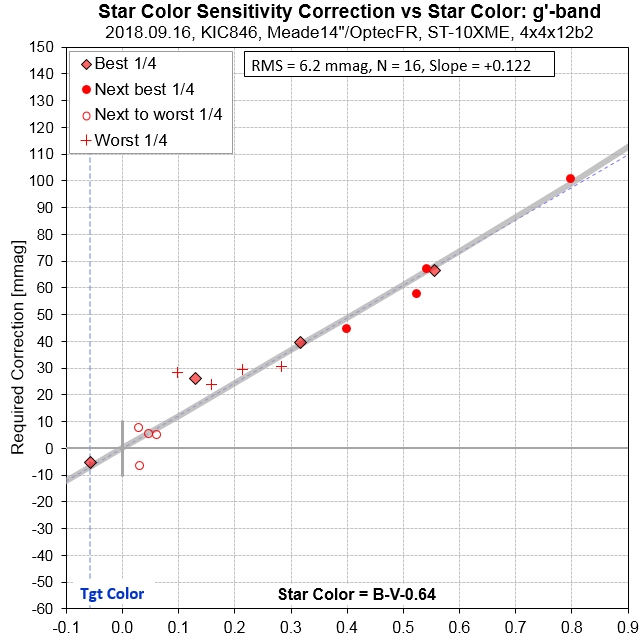
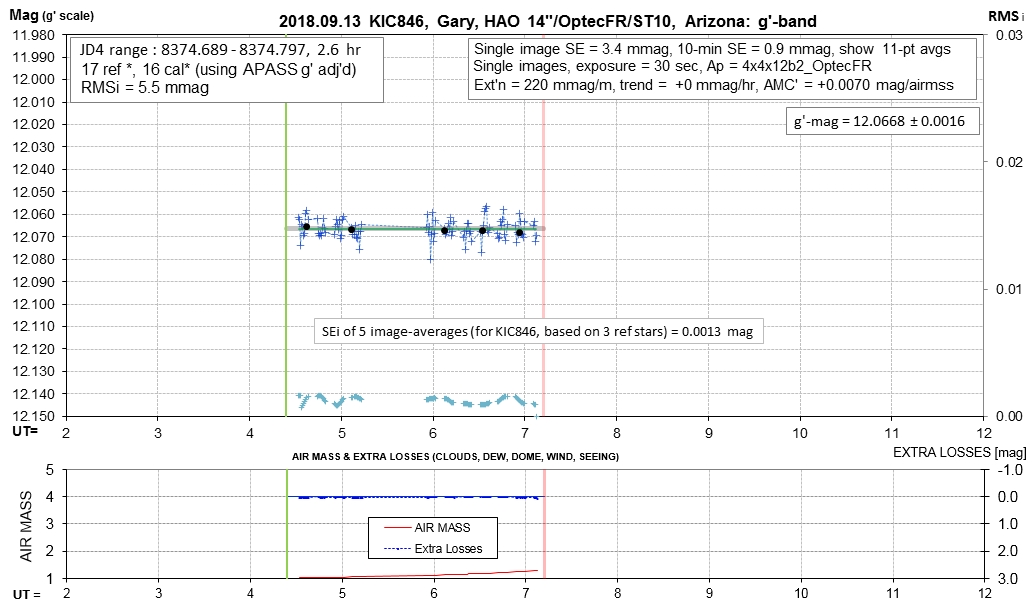
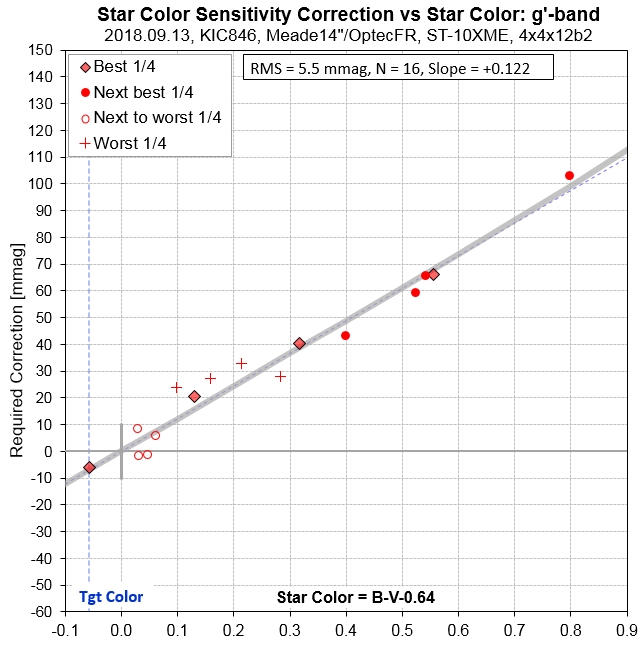
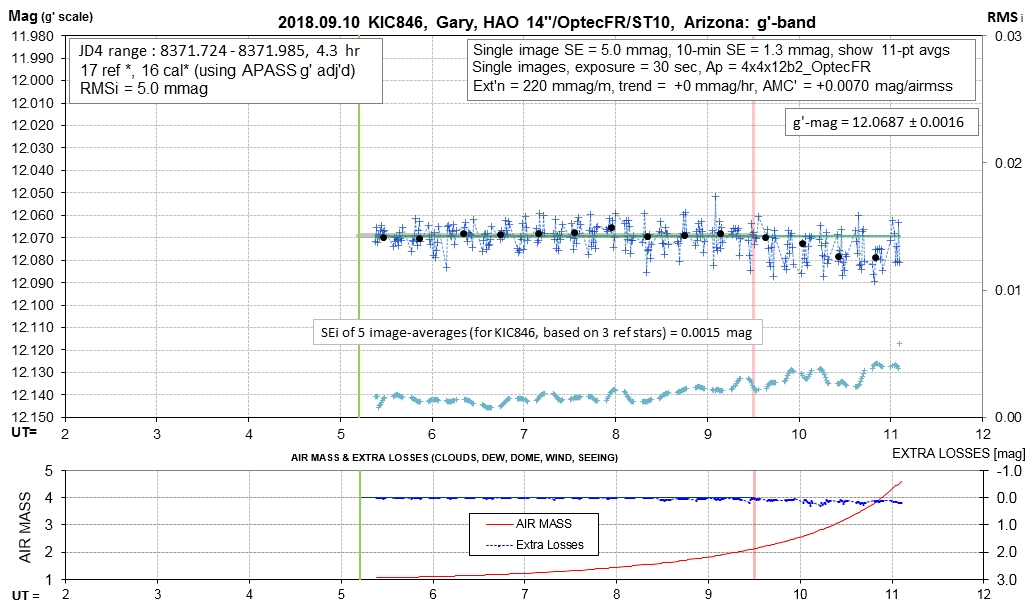
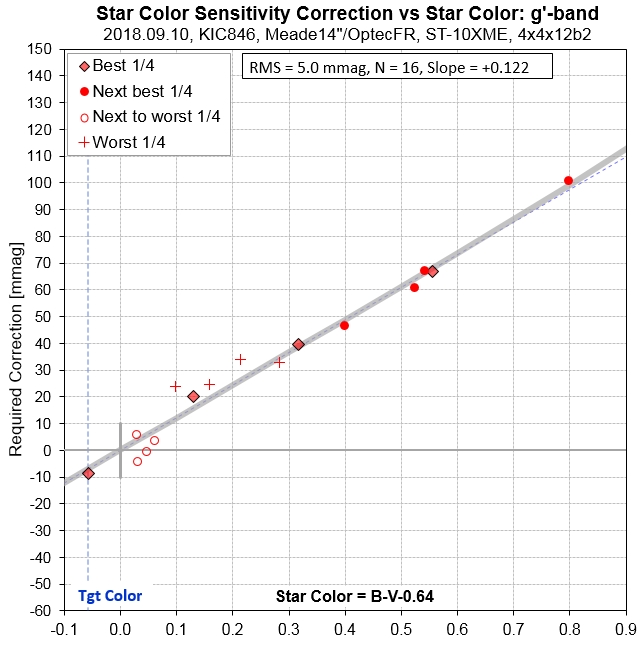
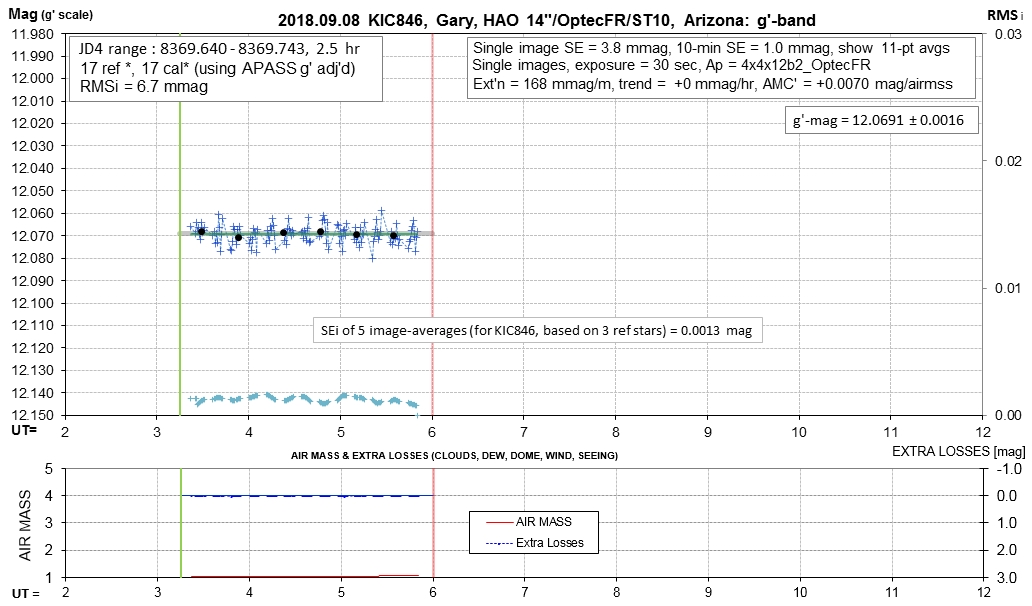
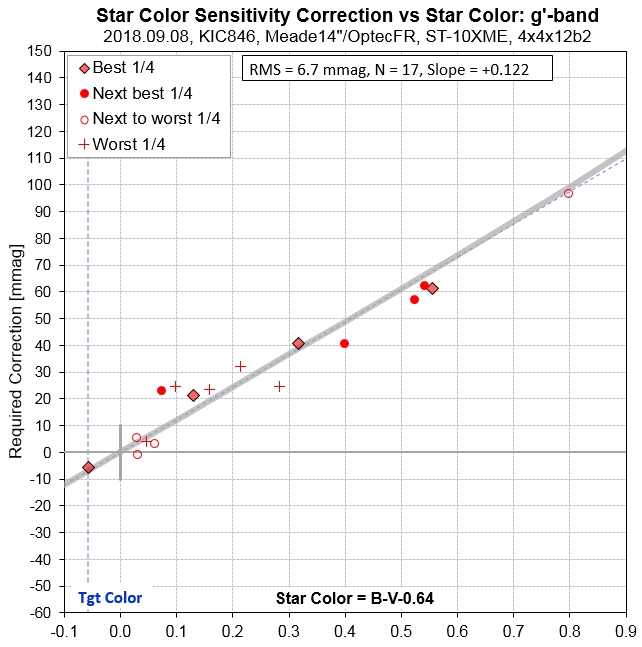
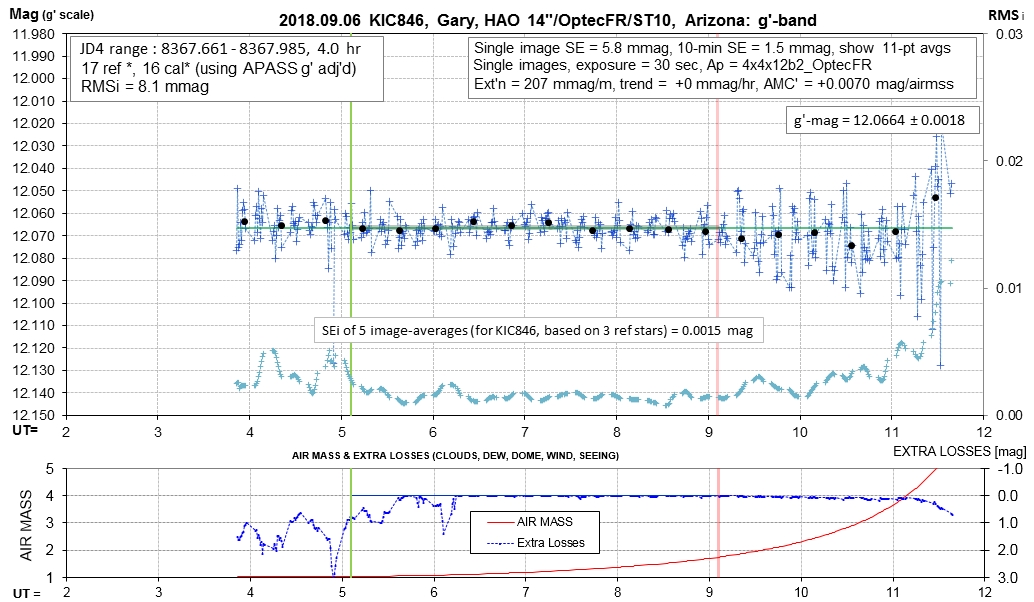
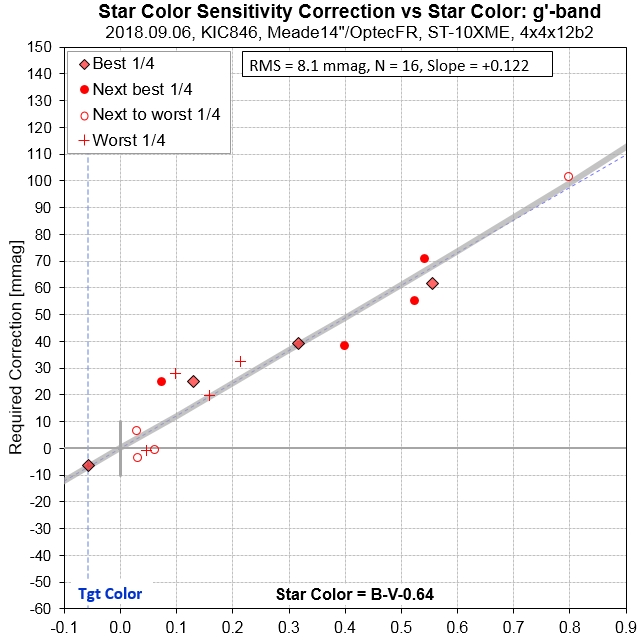
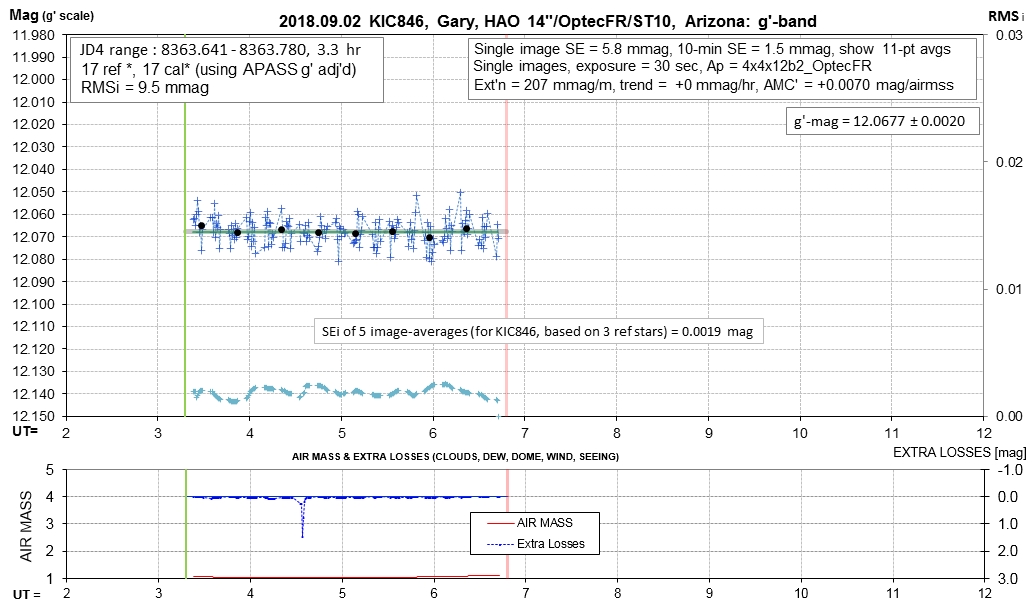
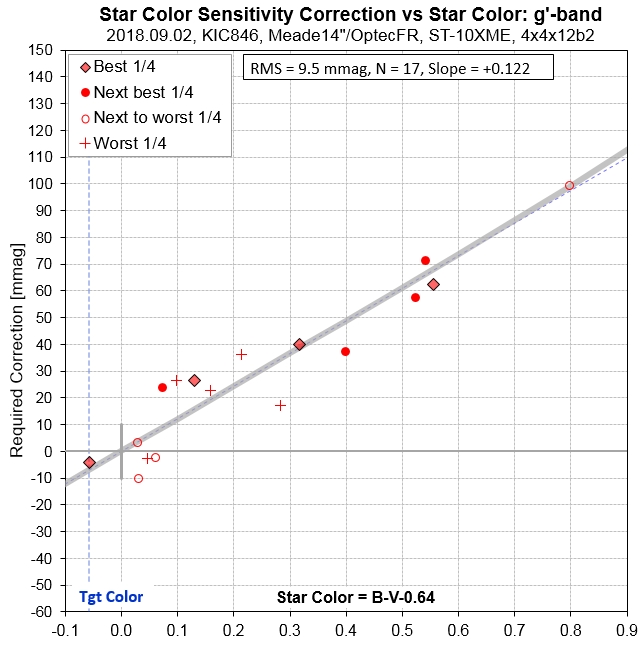
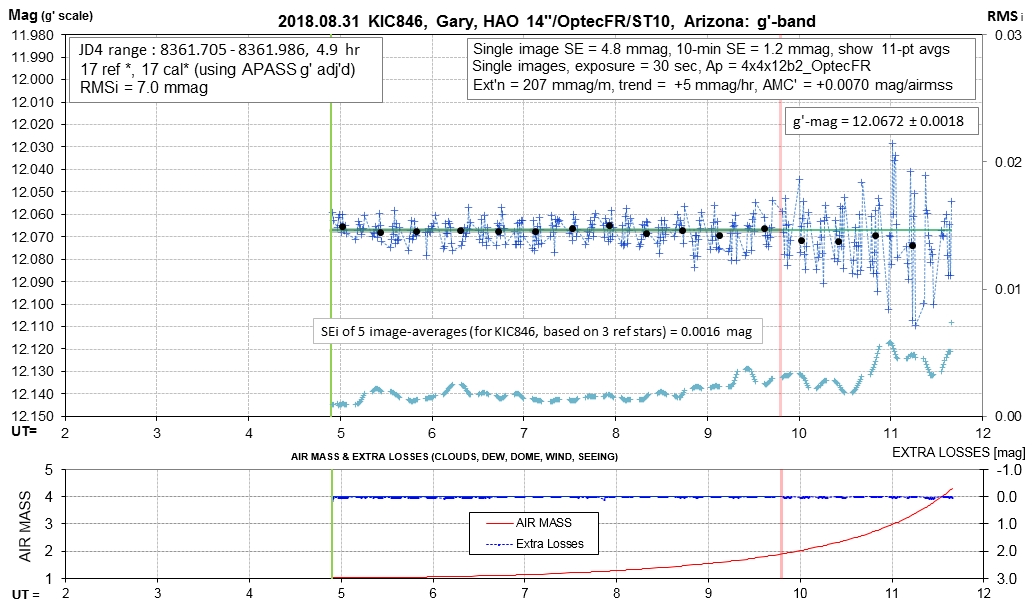
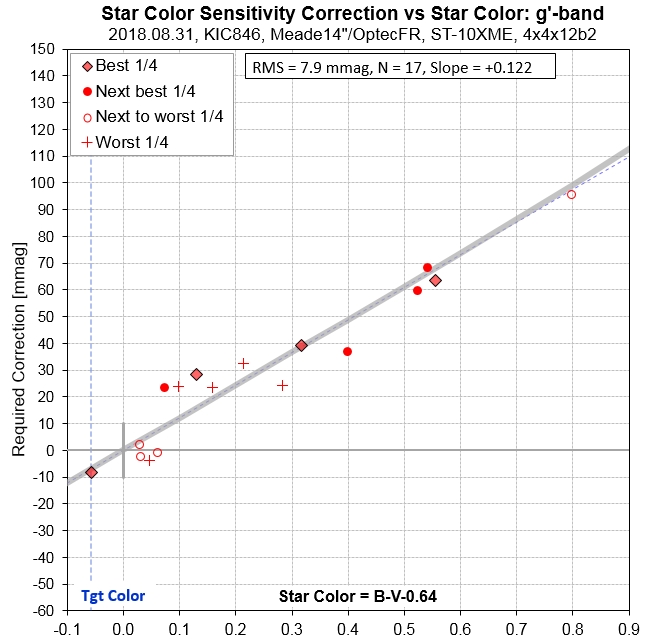
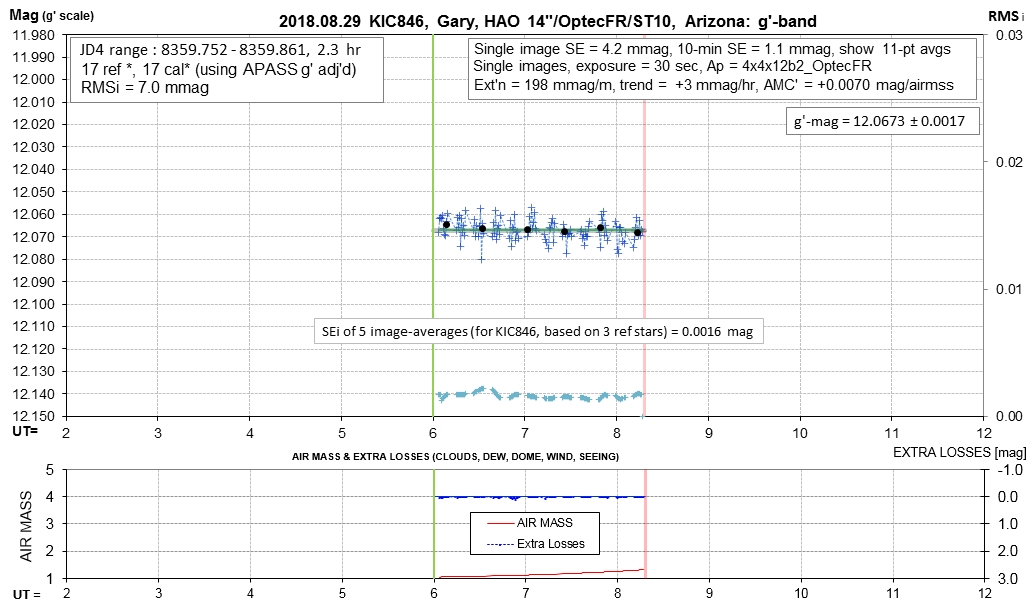
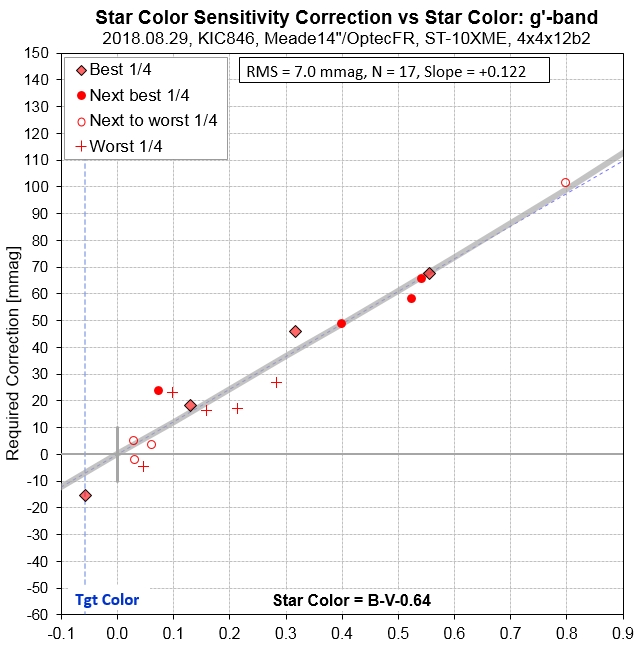
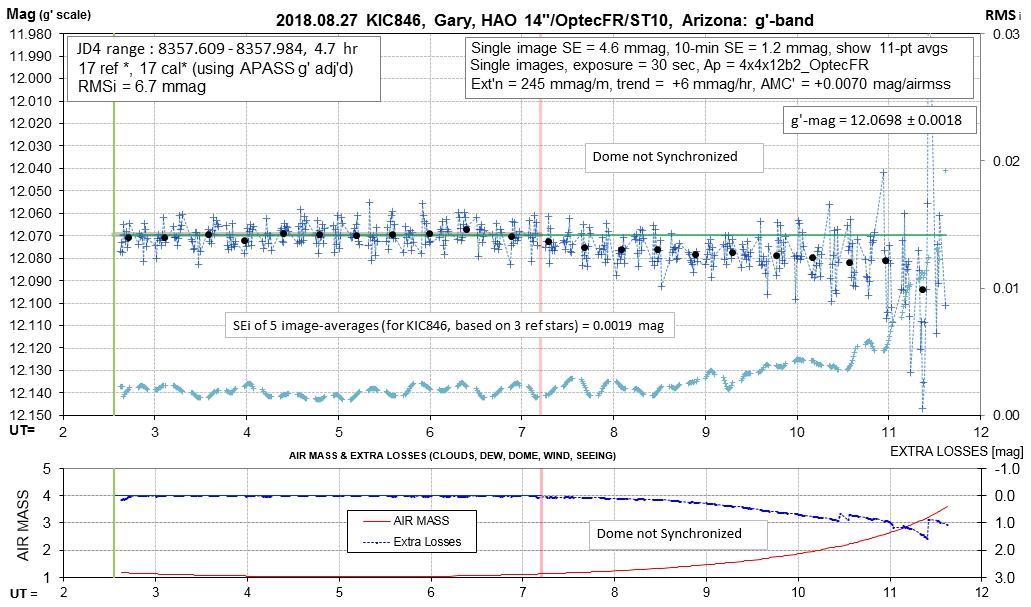
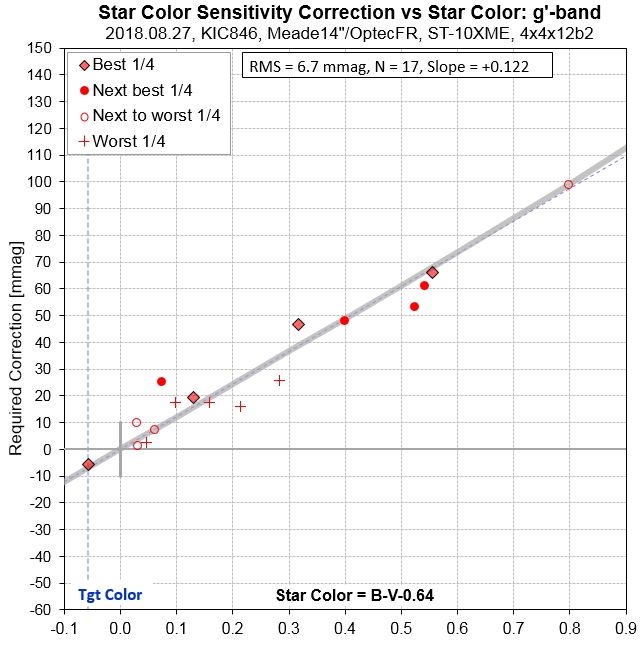
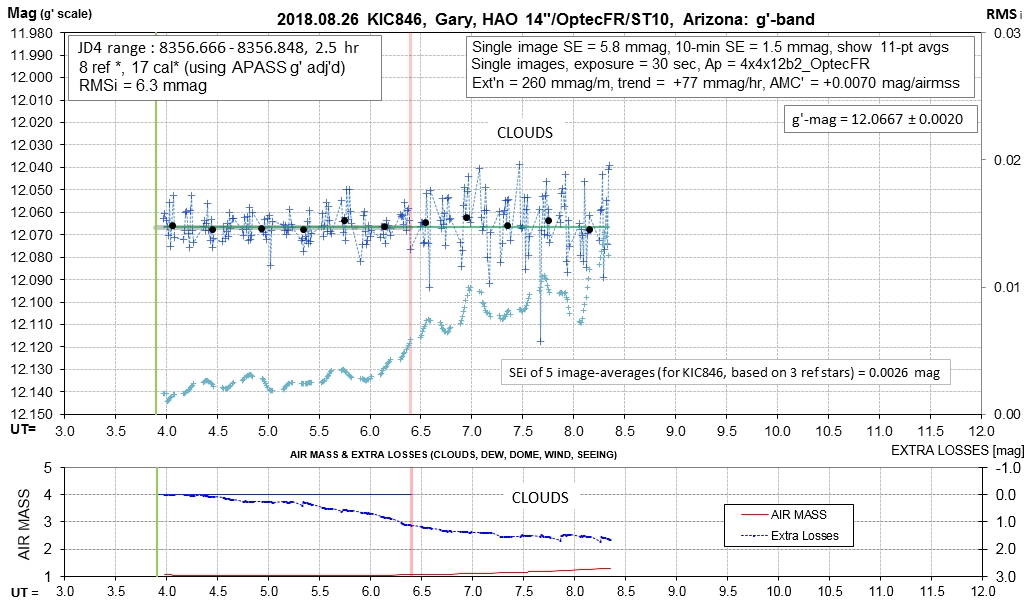
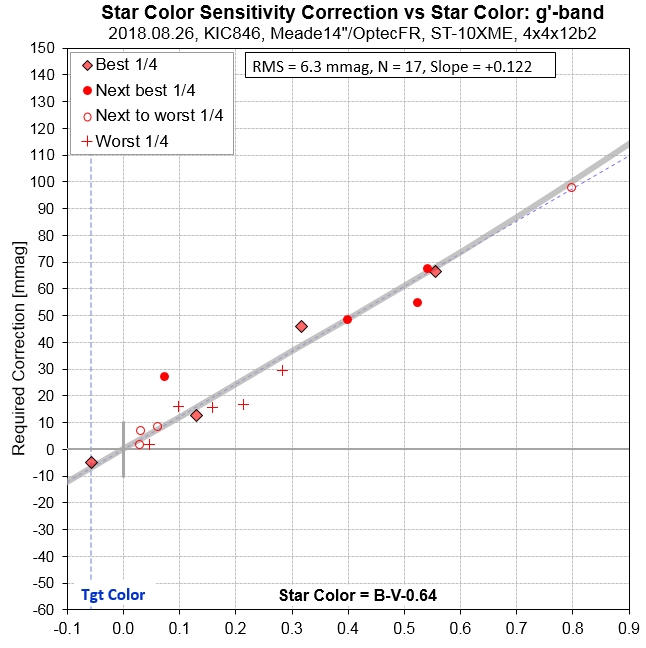
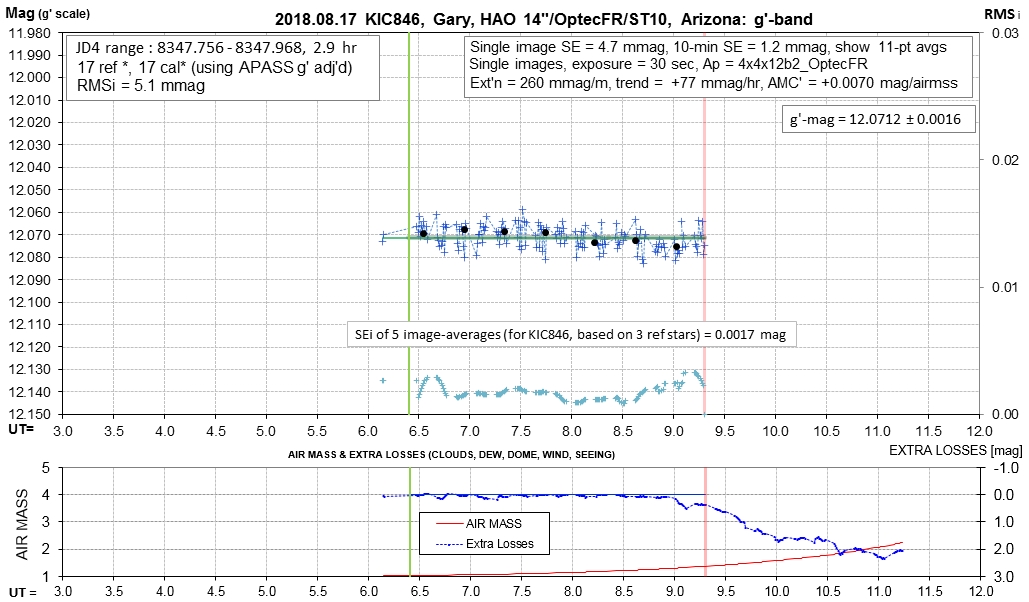
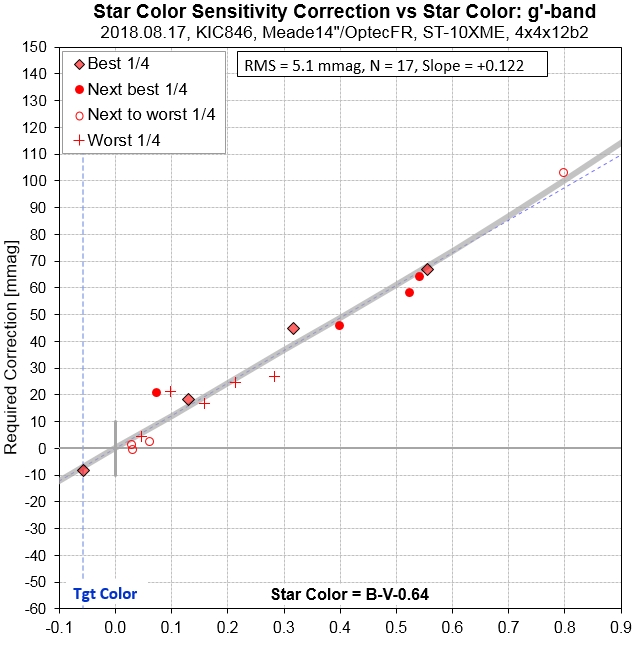
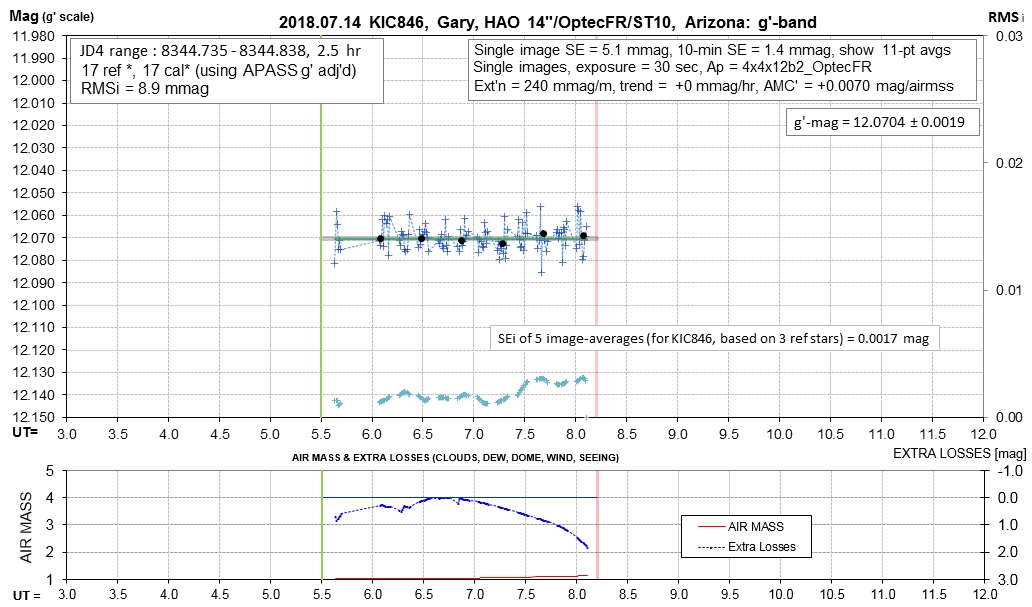
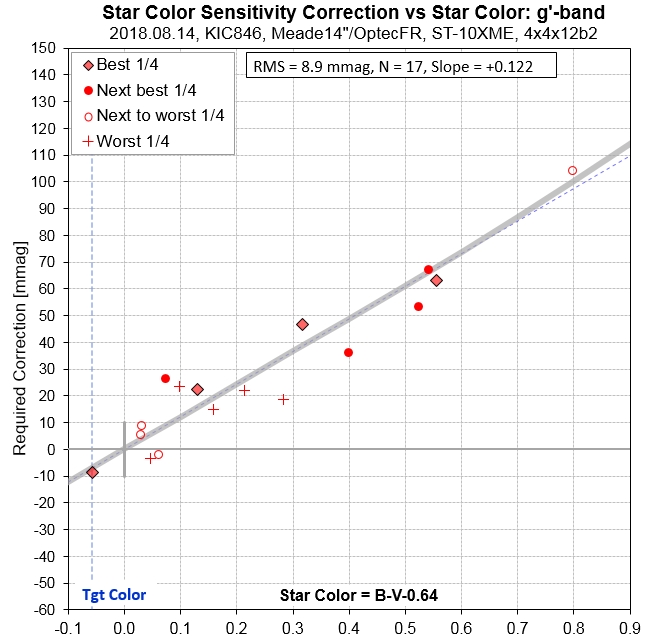
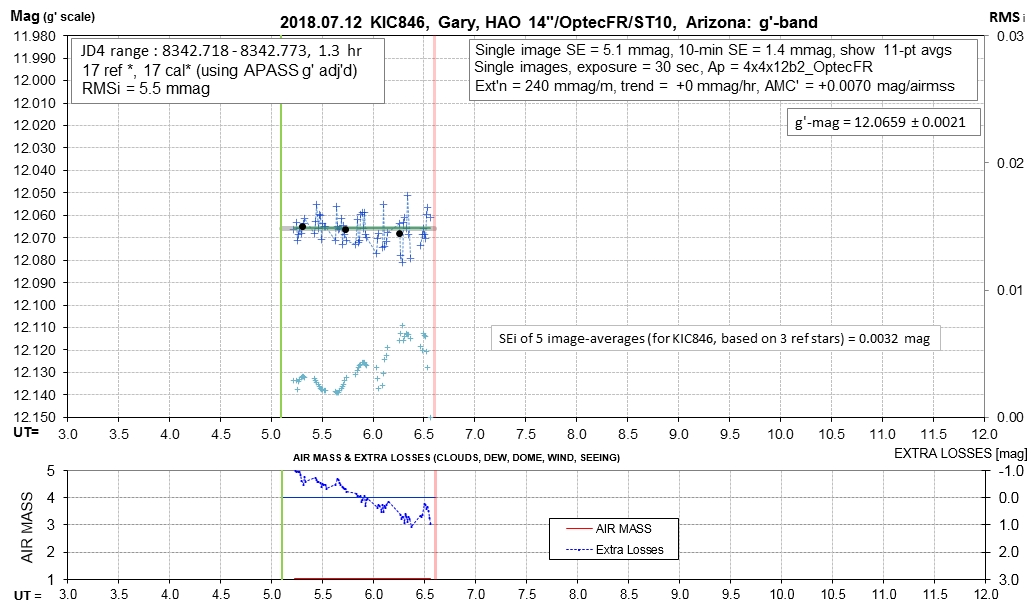
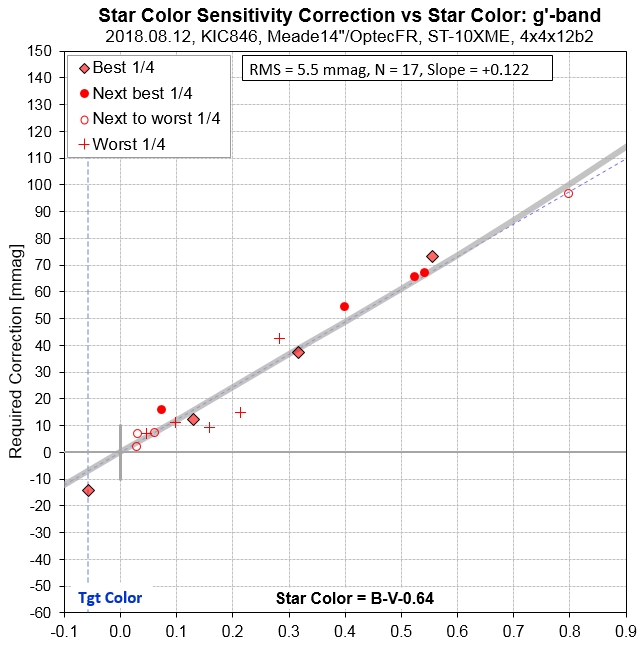
 B L G a r y at u m i c h dot e d u
Hereford
Arizona Observatory resume
B L G a r y at u m i c h dot e d u
Hereford
Arizona Observatory resume